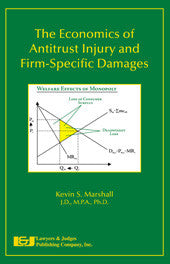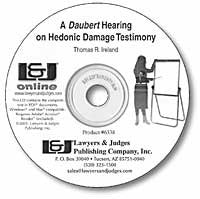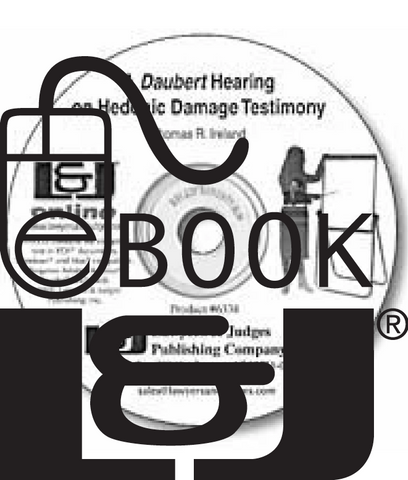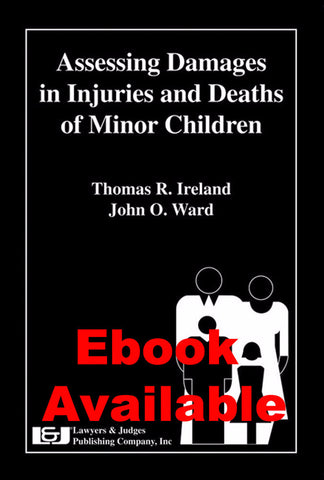
The Economics of Antitrust Injury and Firm-Specific Damages
- Author: Kevin S. Marshall
- ISBN 10: 1-933264-45-4
- ISBN 13: 978-1-933264-45-5
- Copyright Date Ed: December 10, 2007
- Pages: 375 pages
- Binding Information: Paperback
- Size: 6 ✕ 9 Inches (US)
This text teaches you the fundamentals of microeconomics as they relate to the administration and enforcement of antitrust laws both domestically and internationally. The chapters instruct you in the fundamental economic constructs for analysis of antitrust injury, as well as address both legal and economic issues related to the measurement of antitrust damages. Each chapter provides you, the student, practitioner, consultant and/or judicial officer, with critical insight into the analysis and measurement of competitive injury and resulting business damages. You will learn about monopolies, cartels, and deadweight loss, valuing lost opportunities, methods for proving antitrust damages, microeconomics vs. jurisprudential economics, and more.
Each of the contributing authors is recognized for his or her scholarship and expertise in the antitrust regulatory field. Their varied backgrounds and experiences illustrates, for you, the interdisciplinary nature of regulating competition in the markets of the world.
This book is also available as an eBook. Click here to purchase and download:
Topics Include:
- Economics of competitive injury
- Antitrust injury
- Antitrust damages
- Monopolies
- Cartels
- Deadweight loss
- Value of lost opportunities
- Sunk costs
- Market imperfections
- Role of hindsight
- Ex ante approach
- Ex post approach
- Economic authority
- Expert testimony
- Predatory pricing
- Market power
- Microeconomic analysis
- Perfect competition model
- Microeconomics vs. Jurisprudential economics
Table of Contents
Chapter 1: The Economics of Competitive Injury
1.1 Introduction
1.2 Antitrust Injury—Brunswick and its Progeny
1.3 The Perfectly Competitive Model—A Paradigm for Identifying Conduct Injurious to Competition
A. Efficiency—The Objective of Perfect Competition and the U.S. Antitrust Laws
B. The Perfectly Competitive Model and Its Condition of Rationality
C. The Perfectly Competitive Model and Its Condition of Numerous, Price-Taking Buyers and Sellers
D. The Perfectly Competitive Model and Its Condition of Independence
E. The Perfectly Competitive Model and Its Condition of No Entry or Exit Barriers
F. The Perfectly Competitive Model and Its Condition of Product Homogeneity
G. The Perfectly Competitive Model and Its Unrestricted Forces of Supply and Demand—Maximizing Output at Minimum (Competitive) Prices
1.4 An Analytical Paradigm
1.5 Conclusion
Chapter 2: Antitrust Damages and Deadweight Loss
2.1 Monopolies, Cartels, and Deadweight Loss
2.2 Antitrust Law Fails to Award Damages Based on Deadweight Loss
2.3 The Harms of Not Providing a Remedy for Deadweight Loss
2.4 Issues in Incorporating Deadweight Loss Concerns into Antitrust Litigation
A. Measuring Deadweight Loss
B. Who Should Recover Deadweight Loss Damages
2.5 Deadweight Loss and Detrebling
2.6 Conclusion
Chapter 3: Quality Control of Economic Expert Testimony: The Fundamental Methods of Proving Antitrust Damages
3.1 Introduction
3.2 Methods of Proving Amount of Damages
A. Yardstick Method
B. Before-and-After Method
C. Market-Share Method
D. Going-Concern Method
3.3 Analysis Must be Based on Sufficient Facts
3.4 Analysis Must be Tailored to Antitrust Injury (“Fit”)
A. Antitrust Injury
B. Disaggregation
3.5 Conclusion
Chapter 4: Antitrust Damages from Lost Opportunities
4.1 Introduction
4.2 Objectives in Formulating Principles for Determining Damages
4.3 Basic Principles for Estimating Damages
4.4 Common Examples of Methodological Errors in Damage Studies
A. Sunk Costs and Market Imperfections as Sources of Damages
B. Case Study: Pennzoil v. Texaco
4.5 Considerations of the Lag Between the Offenses and Damages: The Role of Hindsight
4.6 Special Consideration of Antitrust Damages
4.7 Conclusions
Chapter 5: How to Value a Lost Opportunity: Defining and Measuring Damages from Market Foreclosure
5.1 Introduction
A. Objectives of this [Chapter]
B. Preliminary Ground Rules
C. Summary of Conclusions
5.2 A Framework for Estimating the Value of Lost Opportunities
A. Damages when Hindsight is Irrelevant
B. Damages when Hindsight is Relevant
5.3 Consideration of the Lag Between the Offense and Damages: The Role of Hindsight
5.4 Prejudgment Interest on Post-Trial Lost Profits in the Ex Ante Approach
A. Considerations Based on Principles of Finance
B. Considerations Based on Nature of Risk
5.5 Prejudgment Interest on Post-Trial Lost Profits in the Ex Post Method 5.6 Prejudgment Interest for Pretrial Lost Profits
5.7 An Integrated Approach to Prejudgment Interest and Damage Methodology 5.8 Should Damages Seek to Make the Victim “Whole” as of the Offense or as of the Trial?
A. Purging the Ex Post Method of Bias
B. Difficulties in Accurately Applying the Ex Ante and Ex Post Methods
C. Opportunism in the Choice of Methodology
D. A Summing Up
5.9 Special Consideration of Antitrust Damages
5.10 Conclusion
Chapter 6: Economic Authority and the Limits of Expertise in Antitrust Cases
6.1 Introduction
6.2 Conceptual Models, Expert Testimony, and the Process of Adjudication
A. Models, Evidence, and Adjudication
B. Expert Testimony and Daubert
6.3 Economic Authority and Expertise in Antitrust Cases
A. Economic Authority and Antitrust: Models, Rules, and the Domain of Fact
B. Economic Authority and Expert Testimony in Antitrust Cases
6.4 Judicial Control of Expert Testimony in Critical Contexts
A. Predatory Pricing
B. Markets and Market Power
C. Cartels
D. Damages
6.5 Evaluating the Primacy of Economic Authority Over Expertise
A. Comparing Institutional Characteristics
B. Implications for the Confrontation Between Chicago and Post-Chicago Economics
6.6 Conclusion
Chapter 7: The Tension Between Jurisprudential Economics and Microeconomics
7.1 Introduction
7.2 Antitrust Injury
7.3 Microeconomic Analysis of Conduct Injurious to Competition
A. The Perfectly Competitive Model—A Paradigm for Identifying Conduct Injurious to Competition
B. Perfect Competition and Its Assumption of Rationality
C. Perfect Competition and Its Information Requirements
D. Product Disparagement and Its Nurturing and Injurious Effects
7.4 Microeconomics vs. Jurisprudential Economics
A. Antitrust Analysis and the Tension Between Microeconomics and Jurisprudential Economics
B. Sanderson v. Culligan International Co.—Judge Easterbrook’s Flawed Jurisprudential Economics
C. Judge Easterbrook’s Analysis
D. Intentional False Disparagement Is Per Se Unreasonable
7.5 Conclusion




